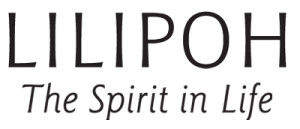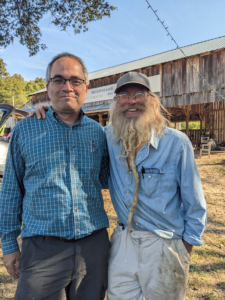Why Did the Doctor go to the Farm? by Dr. Mark Hancock, MD
Why Did the Doctor Go To The Farm?
Mark Hancock MD
It could well be asked why I, as a physician, would have any interest or business going to a farming conference and retreat. From a conventional perspective, there seems to be little relationship or relevance between medicine and agriculture, but I find a fruitful aspect of Rudolf Steiner’s work is that widely different fields can speak the same scientific language and share a real interest in each other's practice. As I reflect on the warm community I met at the Southeast Regional Biodynamic Conference on Jeff Poppen’s (also known as “The Barefoot Farmer”) farm in Red Boiling Springs, Tennessee, I found many parallels and fructifying points.
The Conference and Retreat
I recall several times reading remarks by Steiner about how he loved being around farmers. He could see more than just the physical dimension available to most of us, and he noted how the etheric (or life) bodies of farmers were so healthy and fresh. To his way of seeing it was like viewing a beautiful piece of art, and it was invigorating for him. I found being around farmers to be good for my health, too.
The first two and a half days were the Southeast Biodynamic Agriculture Conference. We began the conference with a keynote presentation by Mark Shepherd, a leader in restorative agriculture. I found it hopeful that this is being taken seriously and that there is real potential for healing of the earth. Mark’s workshop focused on Steiner’s book Philosophy of Freedom,[1] which guides the reader in “thinking about thinking.” As an example, he showed a picture of a conventional orchard and noted that other realities of orchards that encompass the being of the trees and soil also exist and do not look like a conventional orchard. It was great to see Steiner’s work applied to agriculture in this way.
My wife and colleague Enid and I gave a workshop on anthroposophic medicine, discussing remedies and how it differs from the allopathic approach to medicine. What a lovely and open minded crowd! The thirty-plus participants also engaged and experienced anthroposophic herbal salves.
I also attended a workshop offered by Hugh Williams, a biodynamic farmer and orchardist from New York who had put decades of hard work into his farm. He described the relationship between his cows, trees and soil, and how they thrived with his use of biodynamic methods.
In the days following the conference, we attempted to recapitulate all the activities that took place while Rudolf Steiner was giving the Agriculture course at the large estate near the (now Polish) village of Koberwitz in May 1924. Over 100 farmers, scientists, doctors, and artists had gathered there to learn what could be done to bring life back to farms and healing nutrition to the world. In the evening Steiner gave lectures on karma, and in between advised the doctors on medical questions.
Nearly thirty people partook in this weeklong reenactment, about twelve attending the entire week. We spent five to six hours a day studying and conversing with each other after reading the Agriculture lectures aloud, around the fire. We cooked together and made two of the biodynamic preparations. After this experience, we felt we truly belonged with each other.
Agriculture and Medicine
Biodynamic agriculture is based on the idea of the farm as an individual organism, seen as a full being with many aspects. Anthroposophic medicine sees the human being as not just a physical body but also life, soul, and “I” organization. Rudolf Steiner actually described the farm in terms of an upside down human, with the diaphragm as the earth’s surface. Breathing happens through the soil, so that the activity just above the ground is akin to what is below the diaphragm of the human being.
For farmers, two polarities are central – limestone (calcium) and silica (quartz). Limestone can be imagined as greedy, going out of itself, and grabbing other substances, while silica can be experienced as orderly and staying within its own being. In anthroposophical medicine, we see the organizing “salt” forces akin to silica with a focus in the head and the “sulfur” forces in the metabolic sphere that relate more to calcium. From this, we can see the parallel with the agricultural imaginations.
Biodynamics understands the cow horn as a great cosmic reflector, and two biodynamic preparations are buried in a cow horn. For one, the cow horn is filled with cow manure and buried in the ground over half of a year– from fall to spring. The manure undergoes a transformation into a humus-like colloidal substance. Jeff described how he had experimented with other containers like a jar, shoe, or others, and only the cow horn would support this transformation. After it is dug up, a handful of this earthy substance is placed in a large bucket of water and stirred with enthusiasm – vortexed one way, then the other for a full hour. After stirring, it is sprayed on the soil. All the farmers present who had sprayed with horn manure reported witnessing better soil structure and life as a result.
Interestingly, this is reminiscent of how anthroposophic remedies are made. Many are homeopathic, and made using a vortex that is then reversed to open the substance up to cosmic forces. As in biodynamics, the remedy does not replace good doctoring but it is also a way for the creativity of the doctor to flow into the patient – just like the farmer can enliven the soil through the preparations.
Community is also a common theme between agriculture and medicine. Several years ago the idea of Community Supported Agriculture (CSA) was put into practice. This economic paradigm puts the farmer in the center of the community, as each member pays a monthly contribution in return for a share of what the farm produces. We feel that the Direct Primary Care membership[2] model is very comparable in medical care.
Festivals and community participation are emphasized in biodynamics, and preparation making can be a community event. I really enjoyed harvesting bark to be used in the creation of the oak bark preparation, which is placed in a cow or sheep skull and immersed in slowly flowing water over winter. I overheard two farmers discussing the difference in this preparation when the skull was fresh versus used before. Interestingly, there are observations in Anthroposophic medicine about ginger compresses over the kidney/adrenals and the differing effects of using a fresh ginger versus a dried ginger preparation. In both endeavors, the details make a big difference.
I feel rejuvenated and inspired after being a part of the Southeast Regional Biodynamic Conference and 100-year celebration of the Agriculture course, and very grateful that my practice - patients and staff - made it possible for us to go.
Mark Hancock, MD, MPH graduated summa cum laude from Saint George’s Medical School in 2008 and has worked with anthroposophic medicine for his entire professional career. He founded Humanizing Medicine in Atlanta, Georgia, together with his wife Enid, in 2015. https://humanizingmedicine.com/
[1] Rudolf Steiner, Philosophy of Freedom (Rudolf Steiner Press, 1964).

